
All Solutions
Page 60: Practice Questions
$textbf{This is a function}$ because it passes the vertical line test, that we can see from the graph of this function.
Its domain is set $D=Bbb{R}$ and its range is set $R=Bbb{R}$.
#### (b)
$textbf{This is a function}$ because it passes the vertical line test, that we can see from the graph of this function.
Its domain is set $D=Bbb{R}$ and its range is set $R=left(-infty,3 right]$.
#### (c)
$textbf{This is not a function}$ because it doesn’t pass the vertical line test, that we can see from the graph of this function.
Its domain is set $D=Bbb{R}$ and its range is set $R=Bbb{R}$.
#### (d)
$textbf{This is a function}$ because it passes the vertical line test, that we can see from the graph of this function.
Its domain is set $D=left[0,infty right)$ and its range is set $R=Bbb{R}$.
That would be a function $y=30+0.02x$
#### (b)
$textbf{The domain}$ of this function is $D=Bbb{R}$ and the range is $R=Bbb{R}$
On the following picture is $textbf{graph}$ of this function:
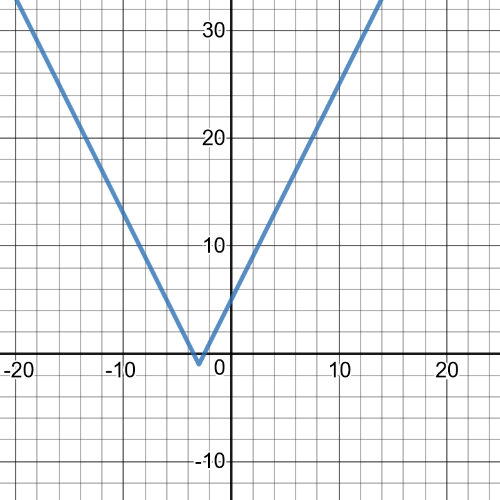
$left|x right|leq2$
left|x right|leq2
$$
For those two functions we have that the things they have $textbf{in common}$ are:
Their $textbf{domain}$ is set $D=Bbb{R}$ and both are $textbf{continious}$ functions.
Things that $textbf{distinguishes}$ between them are:
$textbf{The range}$ of function $f(x)$ is set $R=left[0,infty right)$, it has $textbf{one zero}$ and it is $textbf{even}$ function. $textbf{The range}$ of function $g(x)$ is $R=left[-1,1 right]$, it has $textbf{infinite number of zeros}$ and it is $textbf{odd function}$.
#### (b)
For those two functions we have that the things they have $textbf{in common}$ are:
Both are $textbf{odd}$ functions.
Things that $textbf{distinguishes}$ between them are:
$textbf{The domain}$ of function $g(x)$ is set $D=Bbb{R}$ and $textbf{the range}$ is set $R=Bbb{R}$, it has $textbf{one zero}$ and it is $textbf{continuous}$ function. $textbf{The domain}$ and $textbf{the range}$ of function $f(x)$ is $R=Bbb{R}/left{0 right}$, it has $textbf{no zeros}$ and it is $textbf{discontinuous}$ function.
#### (c)
For those two functions we have that the things they have $textbf{in common}$ are:
Their $textbf{domain}$ is set $D=Bbb{R}$ and $textbf{the range}$ is set $R=left[0,infty right)$, both are $textbf{continious, odd}$ functions, and both have $textbf{one zero}$, they are $textbf{decreasing}$ on $left(-infty,0 right]$ and $textbf{increasing}$ on $left(0,infty right)$
There is no things that $textbf{distinguishes}$ between them.
For those two functions we have that the things they have $textbf{in common}$ are:
Their $textbf{domain}$ is set $D=Bbb{R}$ and both are $textbf{continious}$ functions, both are $textbf{increasing}$ on $left[1,infty right)$.and they are $textbf{positive}$ functions.
Things that $textbf{distinguishes}$ between them are:
Function $f(x)$ is $textbf{odd}$ function. Function $g(x)$ is $textbf{even}$ function.
$textbf{The domain}$ of this fuction is set $D=Bbb{R}$ and $textbf{the range}$ is also set $R=Bbb{R}$.
On the interval $left(-infty,infty right)$, or on its whole domain, this function is $textbf{increasing}$.
Graph of this function is $textbf{symmetric with respect to the coordinate start}$.
#### (b)
$textbf{The domain}$ of this fuction is set $D=Bbb{R}$ and $textbf{the range}$ is set $R=left[2,infty right)$.
On the interval $left(-infty,2 right)$ this function is $textbf{decreasing}$, and on the interval $left[2,infty right)$ this function is $textbf{increasing}$.
Graph of this function is $textbf{symmetric with respect to the $y$-axis}$.
#### (c)
$textbf{The domain}$ of this fuction is set $D=Bbb{R}$ and $textbf{the range}$ is set $R=left[1,infty right)$.
On the interval $left(-infty,infty right)$, or on the whole its domain, this function is $textbf{increasing}$.
Graph of this function is $textbf{not symmetric}$.
symmetric
$textbf{The parent function}$ is $y=left|x right|$.
$textbf{The transformations}$ which we have here are only $textbf{translation}$ 1 unit to the right.
On the following picrure is $textbf{graph}$ of this transformed function:
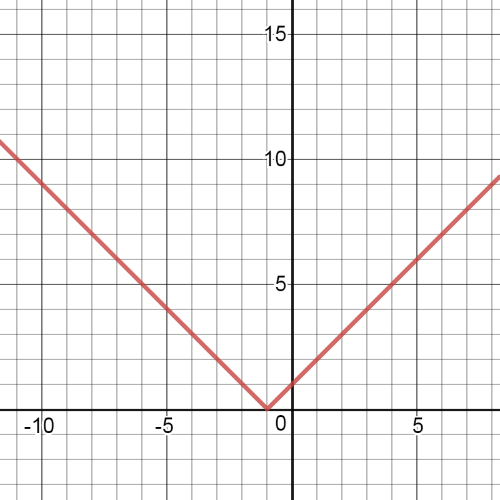
$textbf{The parent function}$ is $y=sqrt{x}$.
$textbf{The transformations}$ which we have here are $textbf{horizontal compression}$ by a factor of $dfrac{1}{3}$, $textbf{vertical stretch}$ by a factor of $-0.25$, $textbf{translation}$ 7 units to the left.
On the following picrure is $textbf{graph}$ of this transformed function:
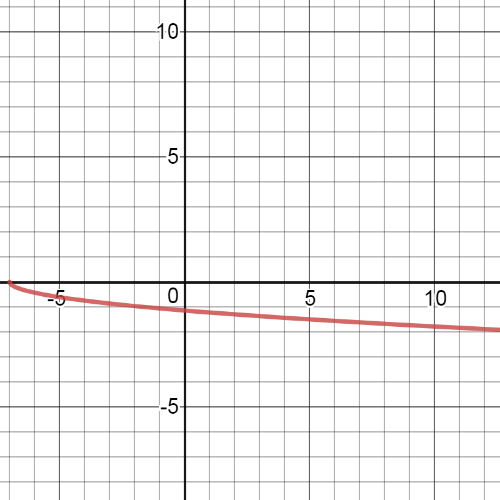
$textbf{The parent function}$ is $y=sin{x}$.
$textbf{The transformations}$ which we have here are $textbf{horizontal compression}$ by a factor of $dfrac{1}{3}$, $textbf{vertical stretch}$ by a factor of $-2$, $textbf{translation}$ 1 unit down.
On the following picrure is $textbf{graph}$ of this transformed function:
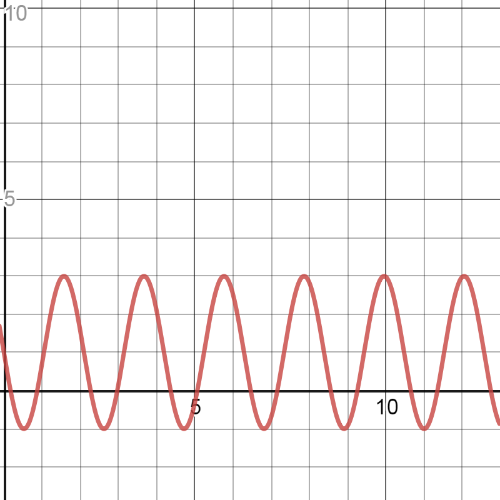
$textbf{The parent function}$ is $y=2^x$.
$textbf{The transformations}$ which we have here are $textbf{horizontal compression}$ by a factor of $-dfrac{1}{2}$, $textbf{translation}$ 3 units up.
On the following picrure is $textbf{graph}$ of this transformed function:
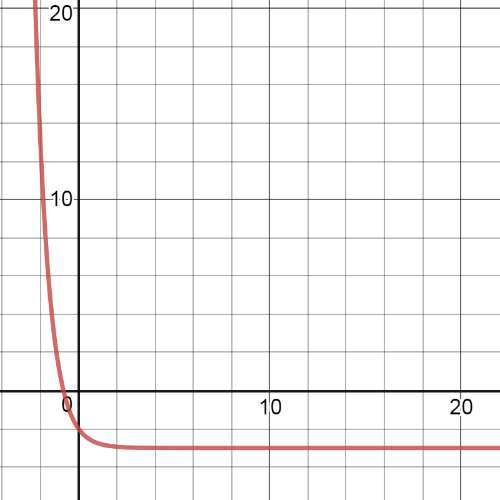
$y=(dfrac{1}{2}x)^2+3=dfrac{1}{4}x^2+3$
On the following picture is $textbf{the graph}$ of this transformed function:
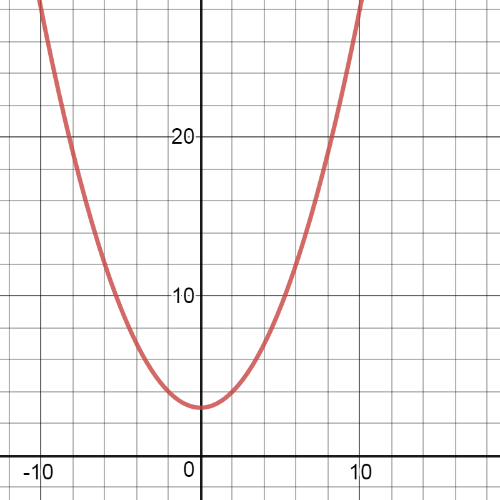
According to explanation of transformation step by step of coordinates on page $34$, we have next:
$left(2,1 right)=left({-1}cdot{2},{-1}cdot{1} right)=left(-2,-1 right)$
$left(-2,-1 right)=left(-2,-1+2 right)=left(-2,1 right)$
So, $textbf{the corresponding point}$ on the graph of thi transformed function is $left(-2,1 right)$.
#### (b)
According to explanation of transformation step by step of coordinates on page $34$, we have next:
$left(2,1 right)=left({-dfrac{1}{2}}cdot{2},1 right)=left(-1,-1 right)$
$left(-1,-1 right)=left(-1-9,1-7 right)=left(-10,-6right)$
So, $textbf{the corresponding point}$ on the graph of thi transformed function is $left(-10,-6 right)$.
#### (c)
According to explanation of transformation step by step of coordinates on page $34$, we have next:
$left(2,-1 right)=left(2+2,1+2 right)=left(4,3right)$
So, $textbf{the corresponding point}$ on the graph of thi transformed function is $left(4,3right)$.
According to explanation of transformation step by step of coordinates on page $34$, we have next:
$left(2,1 right)=left({dfrac{1}{5}}cdot{2},1cdot0.3 right)=left(dfrac{2}{5},0.3 right)$
$left(dfrac{2}{5}-3,0.3right)=left(-dfrac{13}{5},0.3 right)$
So, $textbf{the corresponding point}$ on the graph of thi transformed function is $left(-dfrac{13}{5},0.3 right)$.
#### (e)
First, we will transform a little this function in order to be easier to notice which transformation are made:
$y=1-f(1-x)=-f(-(x-1))+1$
According to explanation of transformation step by step of coordinates on page $34$, we have next:
$left(2,1 right)=left({-1}cdot{2},{-1}cdot{1} right)=left(-2,-1 right)$
$left(-2,-1 right)=left(-2+1,-1+1 right)=left(-1,0 right)$
So, $textbf{the corresponding point}$ on the graph of thi transformed function is $left(-1,0 right)$.
According to explanation of transformation step by step of coordinates on page $34$, we have next:
$left(2,1 right)=left({dfrac{1}{2}}cdot{2},-1cdot1 right)=left(1,-1 right)$
$left(1,-1 right)=left(1+8,-1 right)=left(9,-1right)$
So, $textbf{the corresponding point}$ on the graph of thi transformed function is $left(9,-1 right)$.
represents a point on the graph of fuction $f$,
then $left(y,x right)$
represents a point on the graph of the inverse function}$, $f^{-1}$. According to this, we have that solutions of this task are:
#### (a)
$textbf{The point which corresponds the graph of inverse function is}$ $left(2,1 right)$.
#### (b)
$textbf{The point which corresponds the graph of inverse function is}$ $left(-9,-1 right)$.
#### (c)
$textbf{The point which corresponds the graph of inverse function is}$ $left(7,0 right)$.
#### (d)
Here have actually point $left(5,7 right)$.
$textbf{The point which corresponds the graph of inverse function is}$ $left(7,5 right)$.
#### (e)
Here have actually point $left(0,-3 right)$.
$textbf{The point which corresponds the graph of inverse function is}$ $left(-3,0 right)$.
#### (f)
Here have actually point $left(1,10right)$.
$textbf{The point which corresponds the graph of inverse function is}$ $left(10,1 right)$.
The range of the original function becomes the domain of the inverse function, and the domain of the original function becomes the range of the inverse function}$, and we have the following:
#### (a)
$textbf{The domain}$ of the inverse function is:
$D=left{xinBbb{R}|-2<{x}<2 right}$
And $textbf{the range}$ is:
$R=left{xinBbb{R} right}$
#### (b)
$textbf{The domain}$ of the inverse function is:
$D=left{xinBbb{R}||{x}<12 right}$
And $textbf{the range}$ is:
$R=left{xinBbb{R}|{x}geq7 right}$
(b)$D=left{xinBbb{R}||{x}<12 right}$, $R=left{xinBbb{R}|{x}geq7 right}$
#### (a)
$y=x^2-4$
$x=y^2-4$
$y^2=x+4$
$y=-sqrt{x+4}$ $vee$ $y=sqrt{x+4}$
Here we have that $textbf{inverse relation is not a function}$ because it can be split into the two functions.
On the following picture, red graph is the graph of origin function and the blue graph is graph of inverse relation:
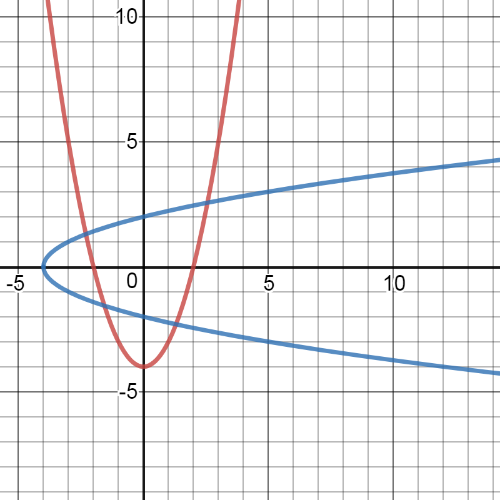
$y=2^x$
$x=2^y$
$y=log_2 x$
Here, $textbf{the inverse relation is a function}$, and on the following picture its graph is blue, while the graph of the origin function is blue:
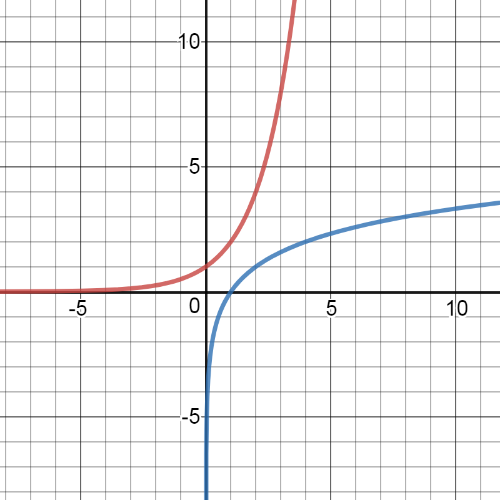
#### (a)
$y=2x+1$
$x=2y+1$
$2y=x-1$
$y=dfrac{1}{2}(x-1)$
#### (b)
$y=x^3$
$x=y^3$
$y=sqrt[3]{x}$
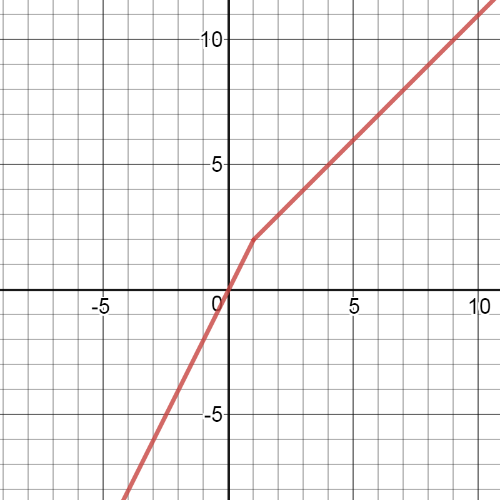
$$
f(x)begin{cases}
3x-1 & {x}leq2\
-x & x>2\
end{cases}
$$
f(x)begin{cases}
3x-1 & {x}leq2\
-x & x>2\
end{cases}
$$
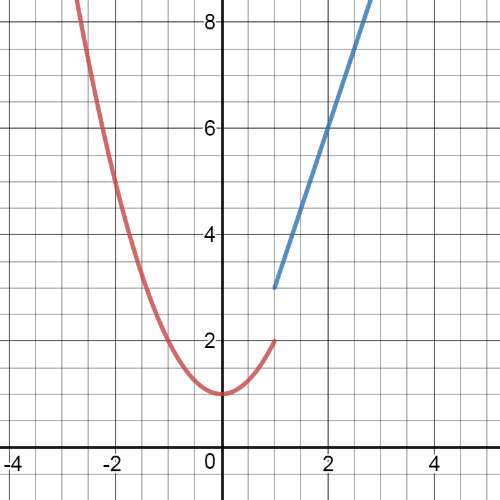
textbf{Not continuous}
$$
According to the text of the task, we have $textbf{following function:}$
$$
f(x)=begin{cases}
30 & {x}leq200\
30+0.03(x-200) & x>200\
end{cases}
$$
#### (b)
How we have that $350>200$, we will use second function to calculate this price, $y$:
$y=30+0.03(350-200)=30+0.03cdot150=30+4.5=34.5$
#### (c)
How we have that $180leq200$, we will use first function to calculate this price, $y$:
$y=30$
$$
f(x)=begin{cases}
30 & {x}leq200\
30+0.03(x-200) & x>200\
end{cases}
$$
(b) 34.5; (c) 30
#### (a)
Here, on shared domain $left{1,4 right}$ we have next:
$f(1)+g(1)=3+4=7$
$f(4)+g(4)=7+8=15$
#### (b)
On share domain, $left{1,4 right}$ is:
$f(1)-g(1)=3-4=-1$
$f(4)-g(4)=7-8=-1$
#### (c)
Here we have next:
$f(1)g(1)=3cdot4=12$
$f(4)g(4)=7cdot8=56$
Here we have $textbf{the graph}$ of the function $f$:
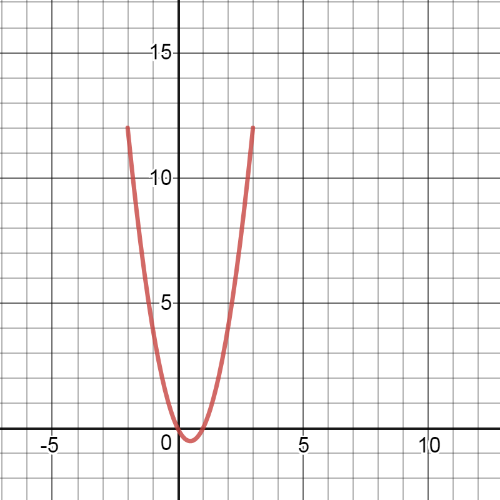
Here we have $textbf{the graph}$ of the function $g$:
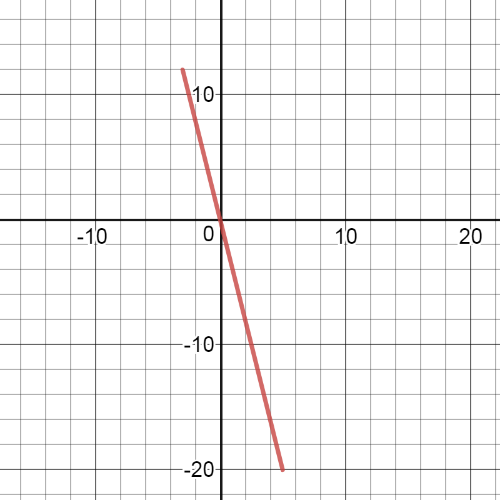
Here we have $textbf{the graph of the function $f+g$ on shared domain}$ $left{-2leq{x}leq3 right}$:

Here we have $textbf{the graph pf the function$f-g$ on shared domain}$ $left{-2leq{x}leq3 right}$:
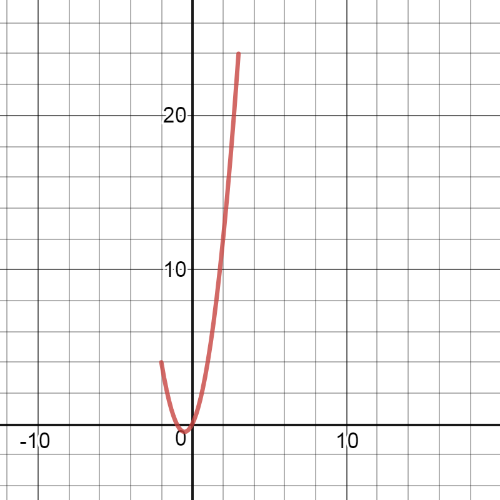
Here we have $textbf{the graph of the function $fg$ on shared domain}$ $left{-2leq{x}leq3 right}$:
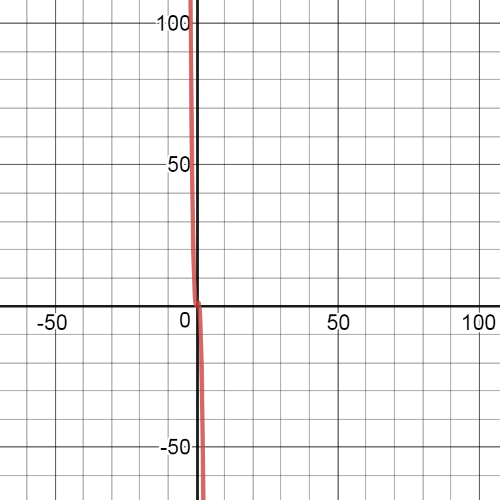
$f(x)+g(x)=x^2+2x+x+1=x^2+3x+1$
$f(x)-g(x)=x^2-+2x-(x+1)=x^2+2x-x-1=x^2+x-1$
$g(x)-f(x)=x+1-(x^2+2x)=x+1-x^2-2x=-x^2-x+1$
$f(x)g(x)=(x^2+2x)(x+1)=x^3+x^2+2x^2+2x=x^3+3x^2+2x$
So, $textbf{the answers are}$:
(a)$rightarrow$D
(b)$rightarrow$C
(c)$rightarrow$A
(d)$rightarrow$B

On the following picture are $textbf{graphs}$ of functions $f$ and $g$.Red one is graph of the function $f$ and blue one is the graph of $g$:
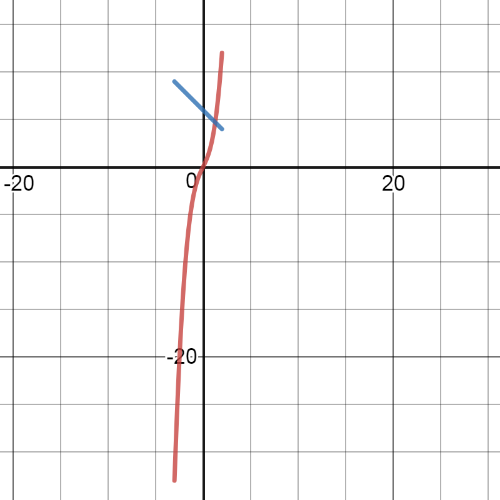
First, let find the equation of $f+g$:
$f(x)+g(x)=x^3+2x^2-x+6$
On the following picture from part $(b)$, green one is $textbf{graph of the function}$ $f+g$:
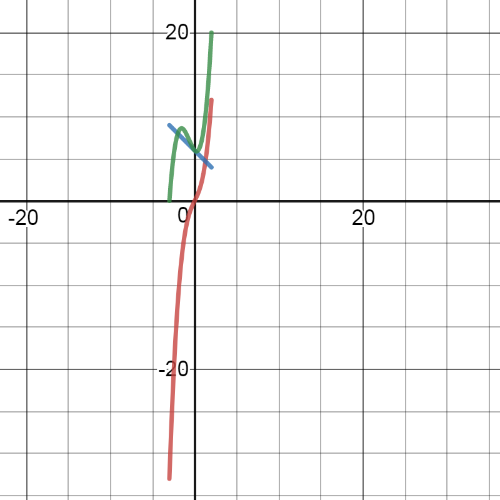
For examlple, we will use $x=0$ and $x=1$, according to the equation from part $(c)$, we have:
$f(0)+g(0)=0^3+2cdot0-0+6=6$
$f(1)+g(1)=1^3+2cdot1-1+6=8$
And from the table we can see that $textbf{those values are matching}$, so, the equation from part $(c)$ is correct.

